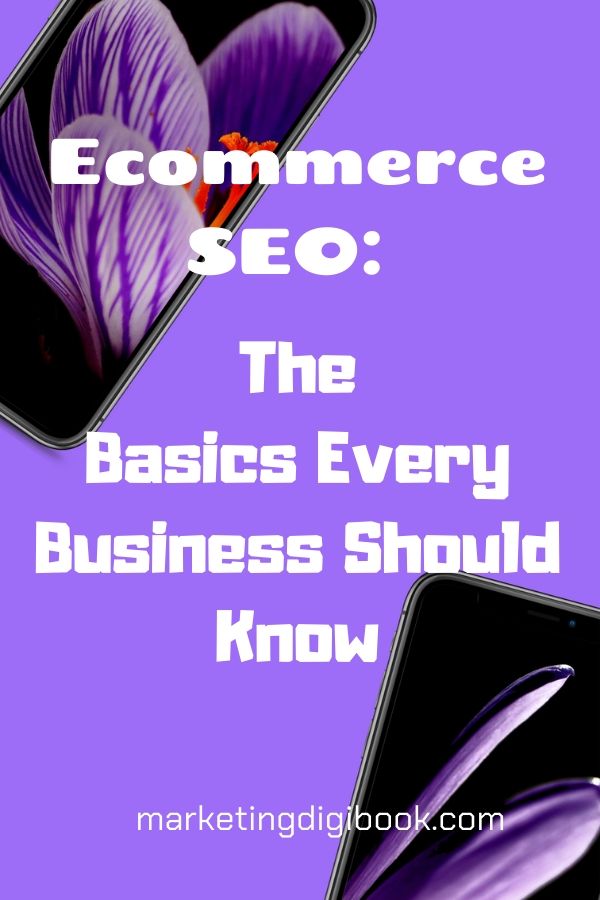Some people may still consider that SEO does not apply to eCommerce and Google will simply pick them up and bring them organic traffic.
Unfortunately, that is more than unrealistic.
Nowadays you need to invest heavily in eCommerce SEO. You have to make sure your website shows up for the right search queries, so you can have a consistent flow of potential buyers.
Furthermore, if all your competitors are optimizing their sites and you’re doing nothing, they’re going to take ALL your traffic, which could eventually put you out of business.
To help you get started, this article will do a schematic presentation of the basic elements of eCommerce SEO, from an SEO audit to keyword research, on-page SEO strategies, and simple link-building tactics.
Let’s go!
What Is E-commerce SEO & Why Does Your Store Need It?
E-commerce SEO is the process of getting your online store to show up in search engines like Google, Bing, and Yahoo.
By boosting your site’s visibility in organic search results, you can ensure a consistent flow of qualified traffic to your site. This way, you can have tens, hundreds, and even thousands of interested prospects and customers coming every day, and consequently, a solid base to grow your business and increase revenue.
The 4 Pillars of E-commerce SEO
To optimize your e-commerce site correctly, you need to follow the 4 pillars of e-commerce SEO in the correct order.
First of all, you have to proceed to an SEO Audit.
SEO Audit
Why Do You Need Regular E-commerce Site Audits?
Failing to build the correct SEO foundation is like building a house without a blueprint.
Before we jump into any strategies, you need to undergo an SEO audit to make sure your e-commerce site doesn’t have any on-site problems. You should also undergo regular site audits to eliminate any new issues that arise and ensure the site is always optimized to its highest potential.
Most Common Site Problems
Some common examples of site issues are:
– Search engines have difficulties in crawling your website
– There are a lot of duplicate content
– There is very little content
– Your website has a range of technical issues like cannibalization or poor site structure
To see whether your e-commerce store has any of these common problems, you can run it through an SEO audit tool.
SEO Auditing Tools
One tool that we have found to be very useful is Screaming Frog.
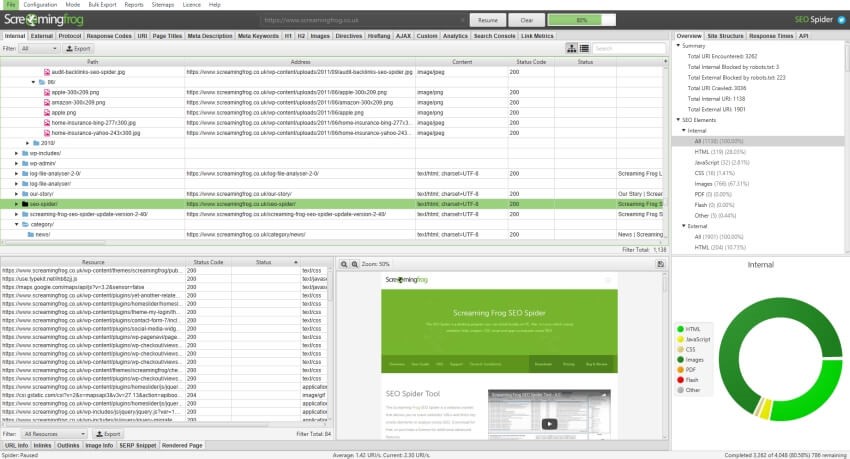
Source: Screaming Frog
The Screaming Frog SEO Spider is a website crawler that lets you analyse and audit technical and onsite SEO. You can begin downloading and crawling 500 URLs for free!
Alternatively, you can use SEMRush or Ahrefs’s onsite audit tool as well. While these tools are all-in-one complete SEO suites, their auditing feature can help you identify any site problems as well.
Keyword Research
Why Keywords Are Critical
Keyword research is the most important aspect of eCommerce on-page SEO.
Keywords bring qualified organic search traffic to your store. Get these words right and you can bring in lots of traffic and consequently revenue.
Unlike normal keyword research, there are additional factors you need to consider if you want to bring qualified buyers to your Ecommerce site.
4 Main characteristics of Your Keywords
- Search Volume:
You must choose keywords that have a decent search volume.
A decent search volume can vary among different niches. There are niches where an average keyword search volume (that is considered high) will have over 10,000 monthly searches, whereas 1,000 monthly searches is a large volume for others.
The best way to find out is to take other high-traffic keywords as a benchmark.
2. Intent
You should always aim to attract qualified traffic. These are visitors coming from the right stage of the sales funnel. These are often prospects who are at the purchasing stage in their customer journey.
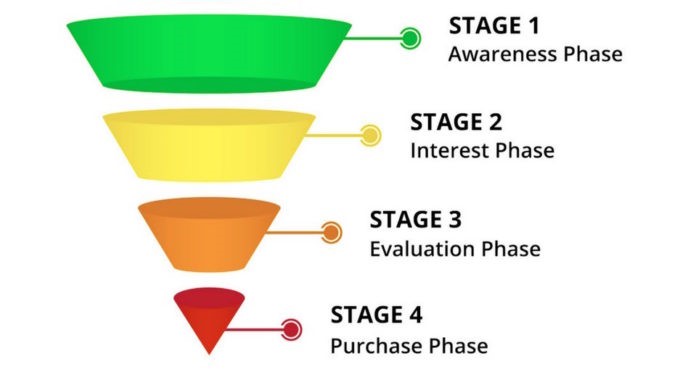
There may be fewer people at this stage, however, these people have high conversion rates because they are generally ready to buy.
To understand the power of intent, have a look at this example:
– If you attracted 10,000 people with a 0.5% conversion rate, whose average order value is $20, you would bring in $1,000 in revenue
– If you attracted 2,000 visitors with a 5% conversion rate, with an average order value of $20, your revenue increases to $2,000.
That’s why you need to focus on attracting qualified traffic with keywords that have the right intent. These keywords use terms like discount, free shipping, buy now, deal, coupon, etc.
3. Relevance
To attract the right audience, you also need to make sure the keywords are relevant to your ecommerce store.
To pick relevant keywords, think of what you can offer that matches the keywords. For example, if you sell men’s shorts online, a relevant keyword could be “affordable male shorts.”
You should only optimize your pages for keywords relevant to your ecommerce site.
If you’re not sure whether the keyword is relevant, you can look at the top 10 results for a keyword and see if the 10 organic positions are similar to your website.
4. Competition
Finally, you should pick keywords that you can realistically rank for.
For example, if you want to rank for the keyword “cheap headphones” you’d have to compete against Amazon, CNET and Wired. These are big sites with high levels of authority.

Instead of going up against these giants, you should attack the longer tail, lower competition search keywords first.
Keyword Research Tools
Here are 3 keyword research tools highly recommended by e-commerce SEO experts:
– Ahrefs: A top, extremely comprehensive SEO tool, leader of the market. They have the keywords explorer tool which can offer you thousands of keyword ideas.
– SEMRush: A great all-in-one SEO suite that has an easy-to-use and intuitive user interface.
– My Free Keyword Research Template: A template created to give you a complete keyword research strategy based on what is working for your competitors.
On-Page SEO
When it comes to on-page ecommerce SEO, you’ll face unique challenges you don’t often come across when you’re optimizing a regular website.
Let’s begin by looking at what on-page SEO is.
What Is On-Page SEO?
On-page SEO is the process of optimizing your website, content, and code to help your store rank higher in the SERPs.
E-commerce On-Page SEO Checklist
Here’s a quick checklist that lists the different on-page SEO factors that impact an e-commerce site and how you can optimize them.
- Title Tags: Add a target keyword in the title tag.
2. Meta Descriptions: Include additional keywords in the description to attract clicks.
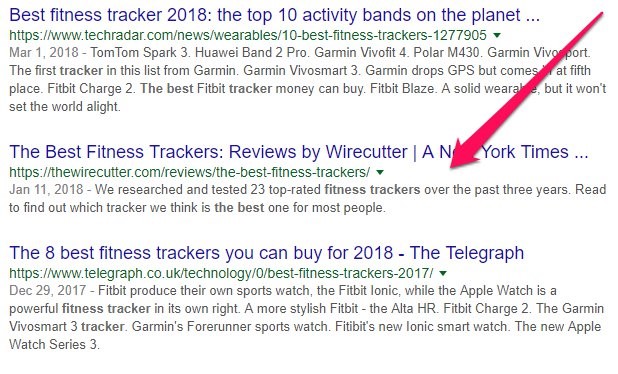
3. Headings and Subheadings (H1, H2, etc.): Use heading breaks to make it easier for users to scan and consume content. Use the product name as the heading to avoid cannibalization issues.
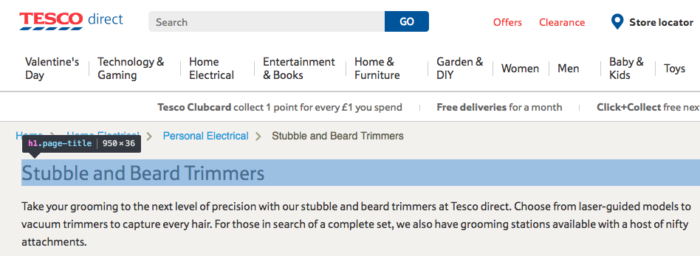
Source: Tesco
4. Images: Optimize all filenames and add relevant alt-tags. Add LSI keywords to each alt-tag and other variations to hit as many long-tail keywords as possible. Lower the size of the pictures for faster load times.
5. Schema Data: Integrate microdata and rich snippets to stand out and draw more qualified traffic.
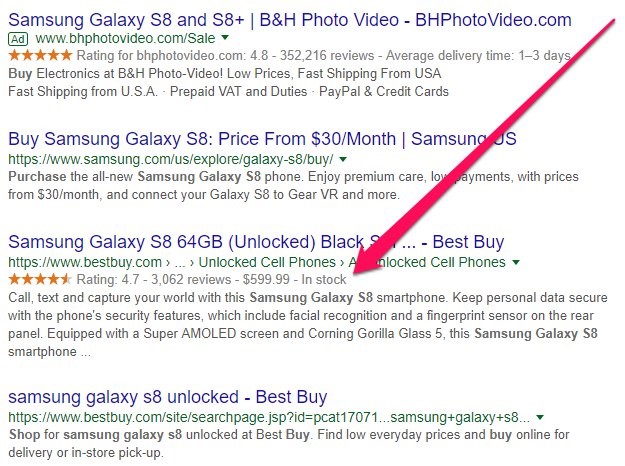
6. Internal Links: Add internal links via product recommendations.
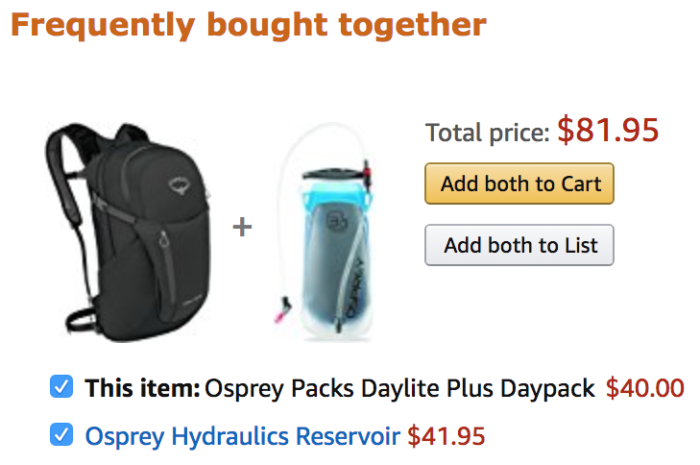
Source: Amazon
Link Building
eCommerce link building is similar to classic link building for any other site.
The more high-quality links you have, the more it can increase your store’s domain authority and search engine rankings. However, unlike regular websites, e-commerce stores need links that point to every section (including category and product pages.)
Below are 2 link-building strategies that can help you get started.
Competitor Analysis
Instead of spending thousands of dollars and hours formulating a link-building strategy, just steal your competitor’s strategy and replicate their process.
Here’s how to start:
- Gather the first 10 organic results for a keyword you want to rank for and write down the URLs on an Excel document.
- Use Ahrefs to find all the backlinks that are pointing to all your competitors.
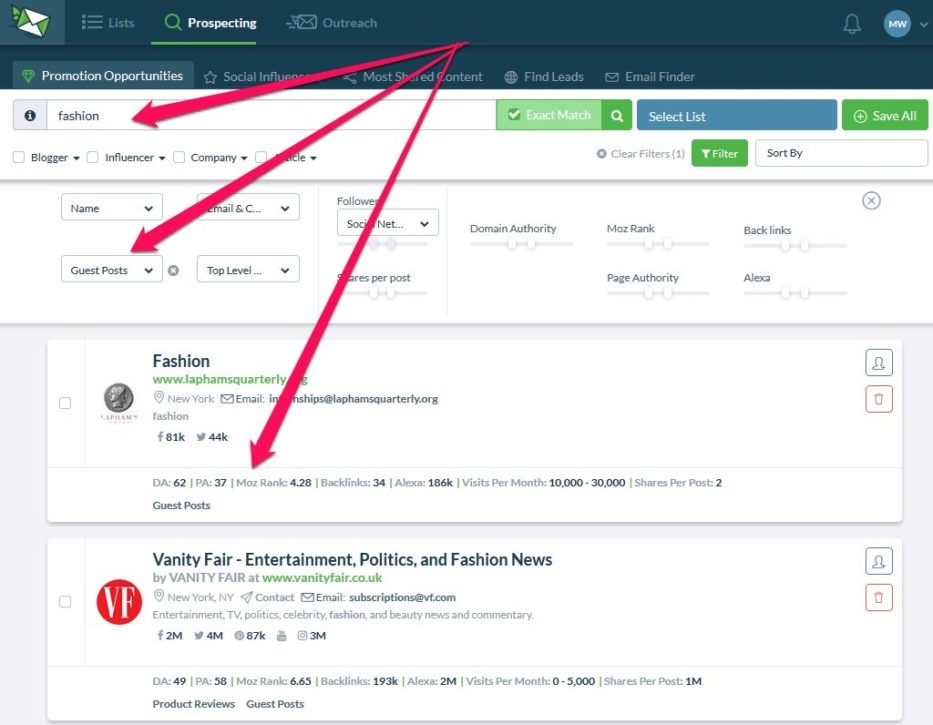
3. Analyse every link from each competitor by sorting them by domain rating, starting with the more valuable links first.
Guest Posting
Guest posting is also another great ecommerce link building technique because it helps you:
– Build genuine relationships with industry bloggers
– Boost website exposure
To get started, you can:
- Begin prospecting your industry
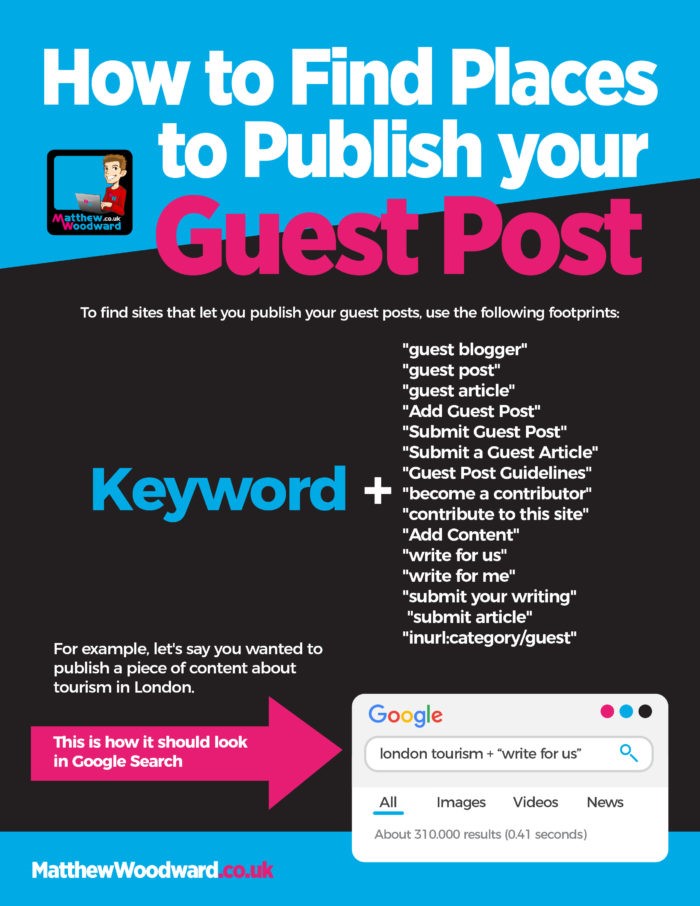
Source: MatthewWoodward.co.uk
After you find a list of websites (using the technique above) that are interested in guest posts, create an Excel sheet that lists all these sites.
2. Qualify your prospects:
Analyze the sites based on set qualifiers like Domain Authority (DA), Trust Flow (TF), number of referring link domains, placement of content, niche relevance, and quality of content.
3. Outreach:
Take each website on the list, find the contact information (name and email address) of the person you want to contact. Alternatively, you can use a tool like Ninja Outreach.
After connecting with the blog manager, create an article outline for approval.
4. Create content:
Once your article is approved, focus on creating in-depth amazing content.
5. Build relationships with bloggers and webmasters:
Continue this process to build strong relationships and expand your online network.
If you want to learn more about other simple link-building strategies, make sure you read E-commerce SEO: The Ultimate Guide.
Conclusion
Investing in eCommerce SEO will be one of the best things you can do for your business.
Not only can you generate a consistent flow of potential buyers, but it will make a profound impact and change your business forever.
You can start by building a solid foundation for your Ecommerce store with an SEO audit.
And then work on keyword research, optimize your on-page SEO, and engage in link-building strategies.
What are you waiting for?
Get started today with SEO for e-commerce to build future wealth.

Invited guest writer:
Matthew Woodward is an award-winning blogger who publishes detailed case studies and tutorials in the internet marketing and SEO niche. He started his blog in 2012 and has been able to assist thousands of online businesses to achieve great results. You may reach him via his Youtube channel, LinkedIn or Facebook.
